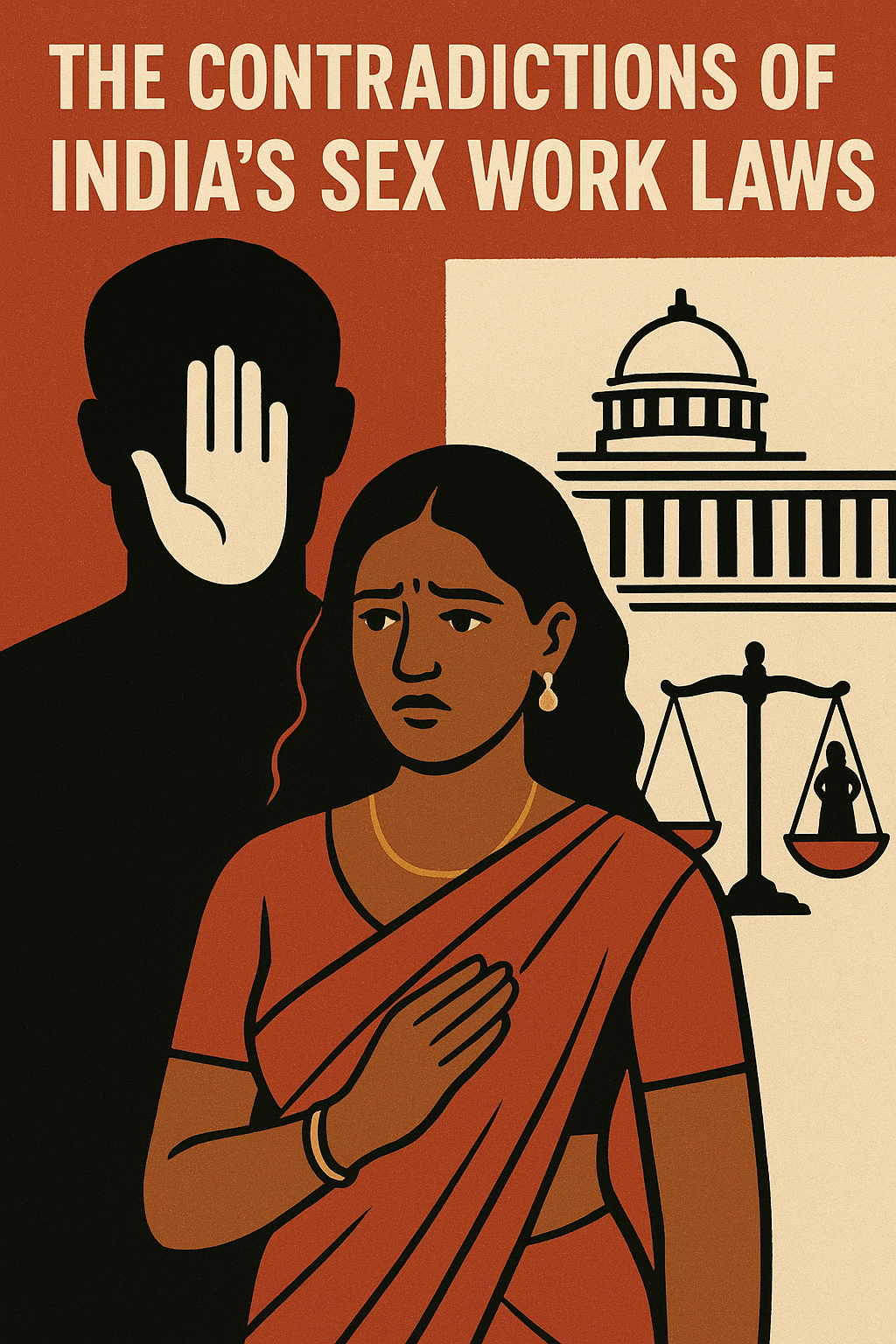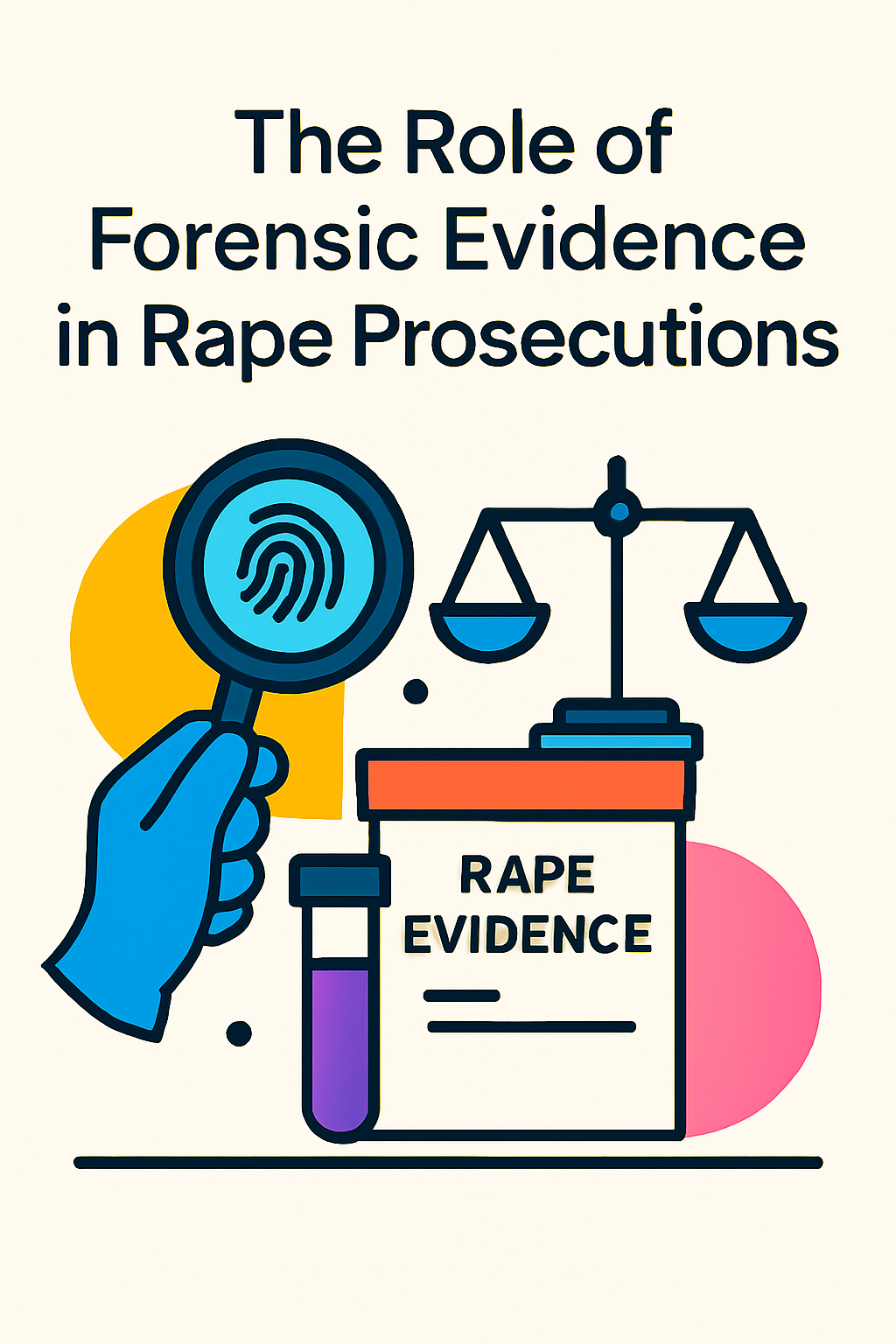



Author: Isha Choubey
University: New Law College, BVDU
Understanding Forensic Evidence in Rape Cases
Sexual assault and rape continue to rank among the most horrible crimes, causing severe psychological, physical, and social harm. In these situations, obtaining justice depends on evidence that can undergo close examination by the legal system. Because it provides scientific objectivity to support survivor accounts and refute perpetrator defenses, forensic evidence has become a crucial tool in contemporary rape cases. Innovations in digital forensics and DNA analysis have completely changed how courts handle sexual assault. However, obstacles such as judicial biases, resource inequalities, and delayed reporting frequently compromise its efficacy. This article examines the many forms of forensic evidence, legal frameworks, technological developments, and the ethical and societal ramifications of their use in rape prosecutions. It illustrates the potential and challenges of using forensics to bring about justice for survivors by examining both international and local viewpoints, including historic court decisions and legislative changes.
The Types and Characteristics of Forensic Evidence in Sexual Assault Cases
A wide range of scientific data used to prove facts in court is referred to as forensic evidence in rape prosecutions. Semen, blood, saliva, or hair are examples of biological evidence that is frequently crucial, and DNA analysis is the gold standard because of how accurately it can identify offenders. While toxicology findings can identify chemicals used in drug-facilitated attacks, medical examinations record physical injuries such as bruises or genital damage. Suspects and crime sites are connected by trace evidence, such as fibers or soil. Forensic examination of text messages, social media interactions, or geolocation data has become essential in the digital age, especially when instances involve coercion or online grooming.A 2018 National Institute of Justice study found that when DNA evidence is correctly obtained, conviction rates can rise by as much as 20%. The Criminal Law (Amendment) Act, 2013 in India emphasizes the legal importance of forensic medical examinations by requiring them within 24 hours of reporting. Nonetheless, the effectiveness of evidence collecting still depends on its caliber and promptness.
The Laws That Control Forensic Evidence
Strong legal frameworks regulate the weight and admissibility of forensic evidence in rape trials. The Daubert v. Merrell Dow Pharmaceuticals (1993) decision in the US mandates that forensic evidence adhere to standards of scientific relevance and trustworthiness under Federal Rule of Evidence 702. This guarantees that only methods that have been proven to work, like STR-based DNA profiling, are accepted. In India, the Protection of Children from Sexual Offences (POCSO) Act, 2012, establishes child-sensitive procedures for gathering evidence, and Section 45 of the Indian Evidence Act, 1872, allows expert testimony on forensic findings. Similar regulations apply to forensic evidence in sexual offense trials under the UK’s Criminal Justice Act 2003, which places a strong emphasis on chain-of-custody procedures to guard against tampering. These frameworks seek to strike a compromise between judicial justice and scientific accuracy, but conflicting results may result from differences in enforcement, especially in areas with limited resources. The Supreme Court of India, for instance, affirmed convictions based on DNA evidence in State v. Mukesh & Ors. (2017), highlighting the legal significance of this evidence when handled appropriately.
Developments in Technology Improving Forensic Skills
The prosecution of rape cases has greatly benefited from the development of forensic technologies. Even in intricate situations involving numerous attackers, accurate identification is possible with the use of Short Tandem Repeat (STR) DNA analysis. An investigation published in the Journal of Forensic Sciences in 2020 noted how Y-STR testing, which separates male DNA from mixed samples, has proven especially revolutionary. In areas where such technology is available, rapid DNA testing has sped up investigations because it can produce results in less than two hours. Drugs like GHB and Rohypnol are now easier to identify thanks to forensic toxicology, which is crucial in drug-facilitated attacks. In situations involving cyber-enabled sexual violence, digital forensics—including metadata analysis and message recovery—has become essential. Advanced forensic labs have been established in India with funding from the Nirbhaya Fund; however, access is still limited in rural regions. Although these developments increase the validity of the evidence, their full potential necessitates a large investment and training.
Difficulties in Gathering and Preserving Evidence
Forensic evidence’s usefulness depends on appropriate collection and preservation, both of which are fraught with difficulties. According to World Health Organization recommendations, biological evidence fades quickly, with the best collecting windows usually occurring within 72 hours. As is frequently the case worldwide, delayed reporting—which is sometimes brought on by shame, fear, or trauma—can make the evidence useless. Errors in data collection or recording result from medical staff members’ inadequate training, especially in poor or rural areas. In State v. Mukesh & Ors. (2017), for example, improperly managed evidence almost put the prosecution at risk. Because courts closely follow rules to preserve integrity, evidence that violates the chain of custody—such as incorrect storage or labeling—may be declared inadmissible. Furthermore, intrusive medical tests may discourage survivors from coming forward, highlighting the necessity of trauma-informed procedures that uphold standards of evidence while putting victims’ dignity first.
Admissibility Issues and Judicial Interpretation
Although their methods differ, courts are essential in assessing forensic evidence. Forensic evidence must satisfy scientific reliability limits set by the Frye v. United States (1923) and Daubert standards in the US, which frequently result in defense challenges based on contamination or misinterpretation. As noted in State of Punjab v. Gurmit Singh (1996), where the Supreme Court underlined that the lack of forensic evidence does not discredit victims, Indian courts have occasionally placed too much emphasis on forensic evidence while ignoring survivor testimony. Justice can be compromised by judicial biases, especially in cases involving non-penetrative assault, such as suspicion of survivors in the absence of tangible proof. Prominent cases, like as People v. Simpson (1995), demonstrate how defense tactics take advantage of forensic ambiguity, emphasizing the necessity of judicial education regarding the strengths and limitations of forensic evidence in order to guarantee fair decisions.
The Social and Moral Consequences of Forensic Evidence
In rape cases, forensic evidence has significant social ramifications. By offering objective confirmation, decreasing reliance on subjective testimony, and refuting defense accusations of false allegations, it empowers survivors. By connecting repeat criminals across instances, DNA databases like the UK’s NDNAD and the US’s CODIS have improved public safety. But an over-reliance on forensics can reinforce the misconception that physical proof is necessary for rape, marginalizing cases that don’t have it, including late-reported or non-penetrative assaults. The agreement of survivors for intrusive tests and the possible abuse of DNA databases, which can unfairly target underprivileged groups, are ethical issues. In India, forensic funding rose as a result of public outcry following the 2012 Delhi gang rape case, yet reporting is still discouraged by cultural shame. In order to ensure that forensic evidence supports victim voices rather than overshadows them, public education initiatives are crucial in bringing society’s perceptions into line with legal reality.
Filling in the Gaps: Techniques for Using Forensic Evidence Effectively
Systemic changes are necessary to improve the use of forensic evidence in rape cases. First and foremost, universal adoption of trauma-informed, standardized processes for gathering evidence is required, along with training requirements for law enforcement and medical professionals. Sakhi One-Stop Centers in India serve as an example, providing combined counseling and forensic services. Second, it is crucial to invest in forensic infrastructure, especially in developing countries. Delays in the ₹3,600 crore allotted by the Nirbhaya Fund for forensic labs in India have brought attention to implementation issues. Third, in order to avoid over-reliance and guarantee that survivor testimony is respected, judicial instruction should cover the limitations of forensic evidence. Fourth, the implementation of cutting-edge technology, such as quick DNA testing, can be accelerated through public-private collaborations.Lastly, a comprehensive justice framework that honors both scientific and human components can be produced by combining forensic evidence with survivor-centered strategies, such as legal assistance, psychiatric support, and anonymous reporting choices.
In conclusion
By giving a historically under-prosecuted crime scientific rigor, forensic evidence has revolutionized rape prosecutions. Advances in technology, including as digital forensics and DNA fingerprinting, have empowered survivors and raised conviction rates. But issues like judicial prejudice, resource inequality, and delayed reporting highlight the necessity of systemic changes. Consistent admissibility criteria require evolving legal frameworks, and gaps in evidence collecting and social attitudes can be filled through trauma-informed practices and public education. Forensic evidence can be crucial in providing justice by striking a balance between ethical and survivor-centered methods and scientific breakthroughs. This can help to create a legal system that respects the dignity and accountability of survivors of sexual abuse.
References